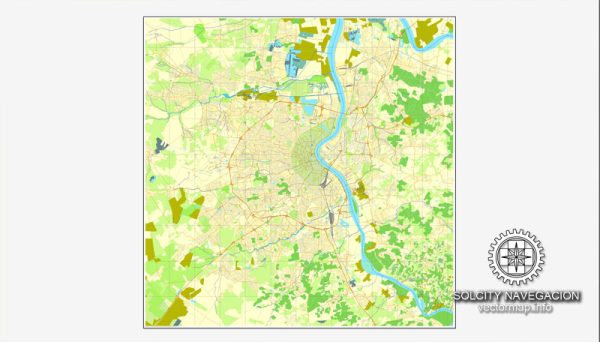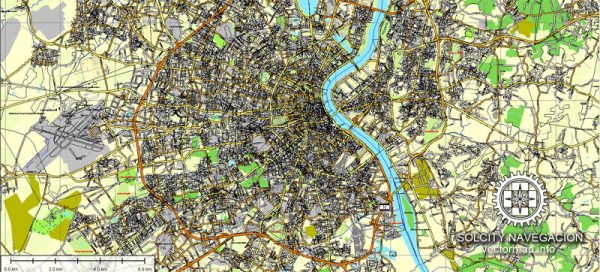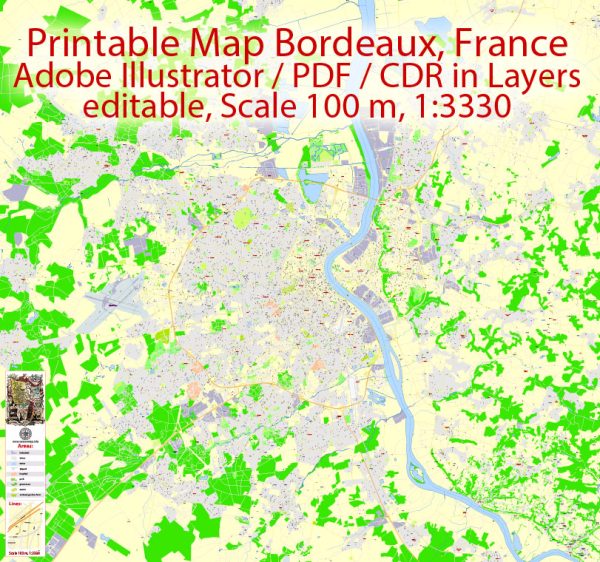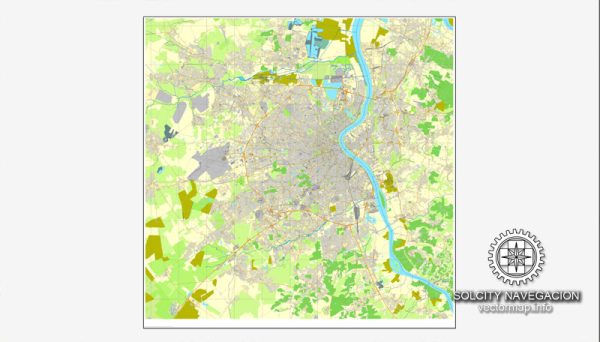The history of urban development in Bordeaux, France, is a rich and diverse story that spans over 2,000 years. The city’s strategic location on the Garonne River has played a crucial role in its development, making it a significant hub for trade, culture, and innovation.
- Roman Period: The city’s origins date back to the Roman era when it was known as “Burdigala.” It was founded around 20 BC, and its development as a Roman trading post and administrative center laid the foundation for its urban layout. During this time, the city featured a grid-like street plan and important Roman architectural elements.
- Middle Ages: Bordeaux continued to thrive during the Middle Ages, especially as a center for the wine trade. The city’s prosperity was further boosted when it became an English possession for a period during the Hundred Years’ War. The medieval city was characterized by narrow streets, fortifications, and the construction of numerous churches and civic buildings.
- Renaissance and Enlightenment: The 16th and 17th centuries marked a period of renewal and expansion for Bordeaux. The city’s port and trade networks were vital in its economic growth. This period saw the construction of classical-style architecture, including the Place de la Bourse, which remains a remarkable example of this era.
- 18th Century: Bordeaux experienced significant urban development during the 18th century. Baron Haussmann, who later transformed Paris, worked on urban improvements in Bordeaux, broadening streets and opening up squares. The city became a thriving center for commerce and wine exports.
- 19th Century: The construction of the Bordeaux-Bayonne railway in the mid-19th century brought further prosperity to the city, boosting its connections with other parts of France and Europe. New districts and infrastructure developments accompanied this period of industrialization.
- Belle Époque and Early 20th Century: Bordeaux continued to evolve, embracing Art Nouveau and Art Deco architectural styles. The city’s port and wine trade continued to be crucial to its economy. However, the two World Wars and economic downturns in the mid-20th century brought challenges to Bordeaux’s development.
- Late 20th Century to Present: Bordeaux experienced a renaissance in the late 20th century, marked by urban revitalization and the preservation of historic landmarks. The city’s historic center was designated as a UNESCO World Heritage site, preserving its architectural heritage. The construction of the Cité du Vin wine museum, new tramway lines, and the overhaul of the riverfront have further revitalized the city.
Today, Bordeaux stands as a vibrant, modern city with a strong focus on sustainable urban development. It continues to evolve, combining its historic charm with contemporary architecture and a focus on green spaces and sustainable transportation. The city has also earned a reputation as a hub for wine and gastronomy, contributing to its cultural significance and appeal.





 Author: Kirill Shrayber, Ph.D.
Author: Kirill Shrayber, Ph.D.